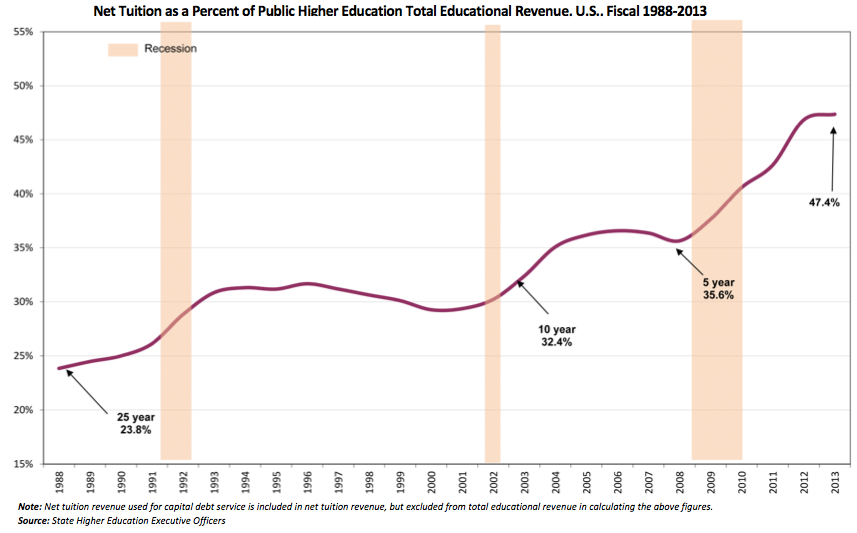State cuts to higher education spending aren’t the only reason public colleges are getting more expensive. But they are, without a doubt, one of the most important reasons. In some parts of the country, undergraduate education has been all but privatized, with taxpayers covering less than 15 percent of the expenses necessary to educate students.
Here’s what the privatization trend looks like nationally, as captured in the State Higher Education Executive Officers’ newest annual report on public college finances. In the 1980s, student tuition covered less than a quarter of so-called “educational revenue,” which is essentially the money colleges have available to spend on basic operating expenses, like teaching and administration. The rest came from government appropriations. Today, students cover almost half the cost of their own educations, on average.

The movement away form public funding is far further along in some states than others. In New Hampshire and Vermont, tuition supplies 85 percent of educational revenue. (Not coincidentally, New Hampshire may well have the worst student debt problem of any state.) In contrast, students pay for around a third or less of their own expenses in states like North Carolina, New Mexico, California, Alaska, and Wyoming.

Government cuts are part of the privatization story, but so are increasing expenses. States tend to cut funding to colleges in the wake of recessions, which forces tuition up. When the economy heals, they often restore some of it. But even if they do, tuition generally doesn’t drop much. Instead, the previous hikes tend to get locked in, as schools accumulate new expenses. But whether you think heartless legislators or feckless administrators are to blame, the end result is the same: Students are paying a growing share of costs, and the public’s share is shrinking.
